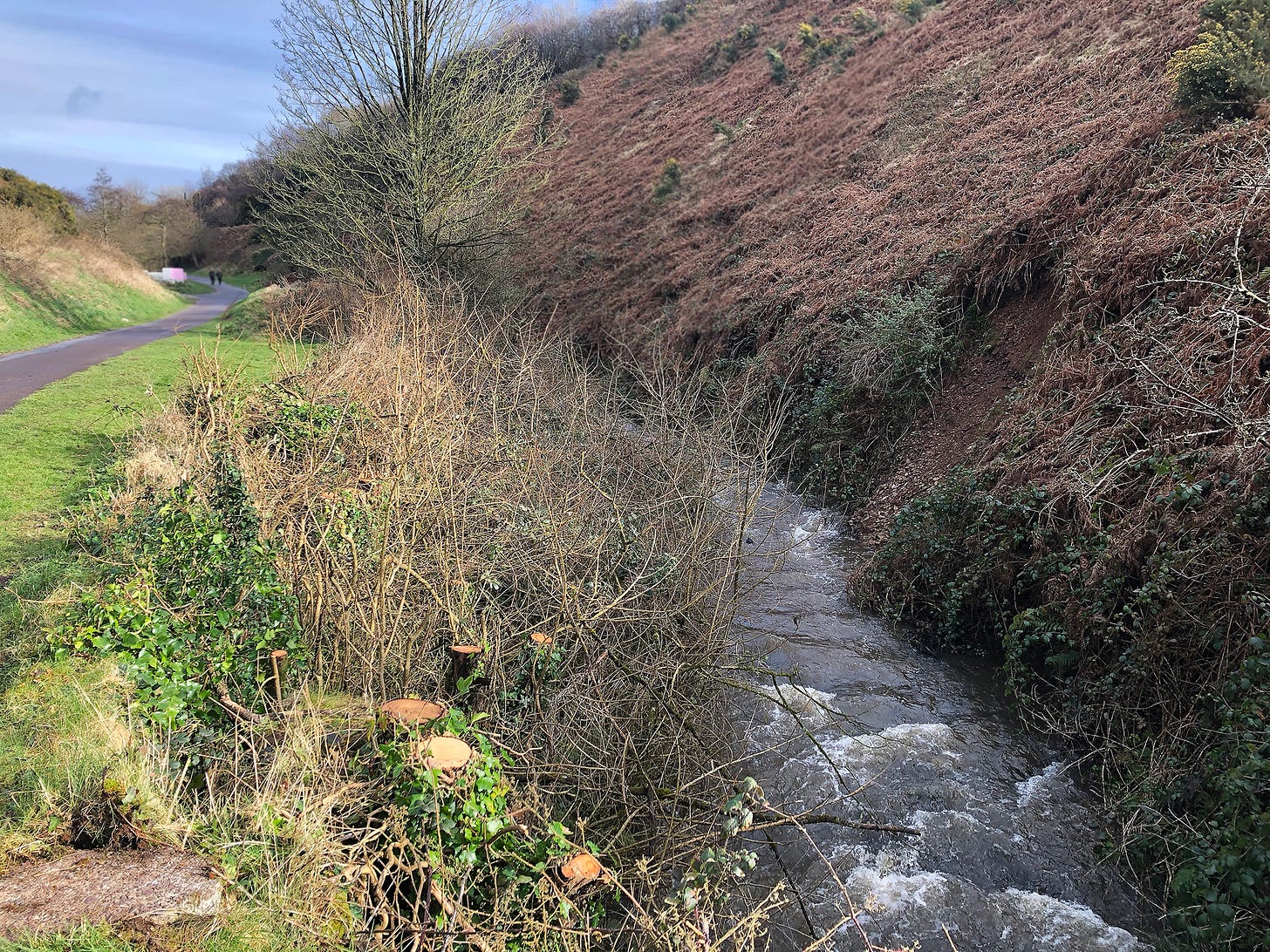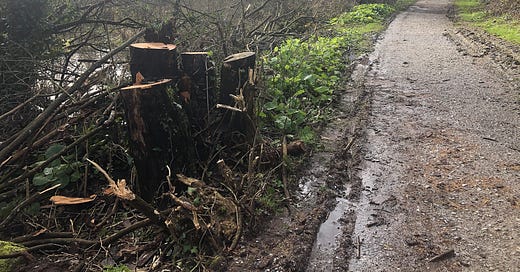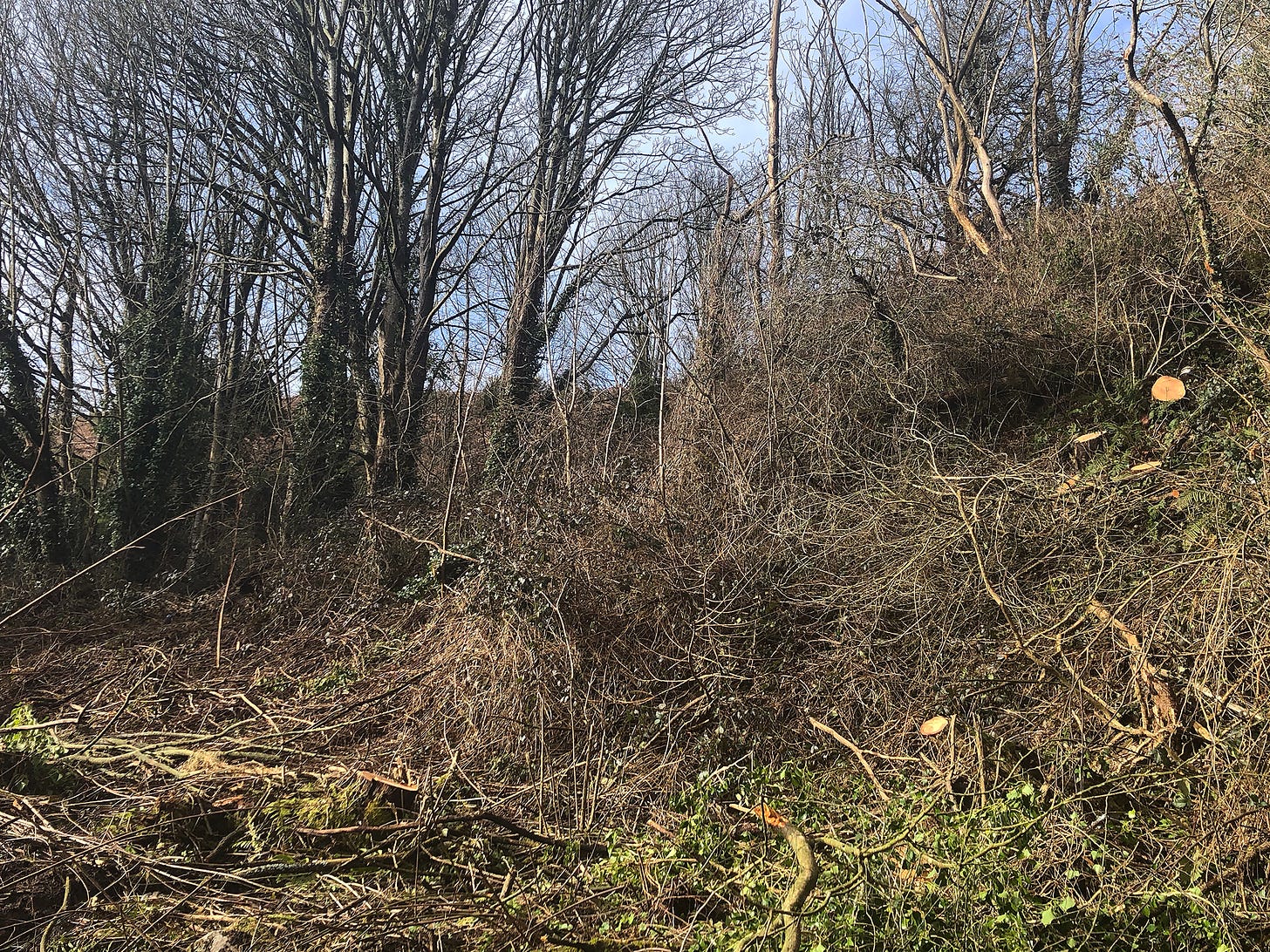Tree felling in Glen River Park was for "essential Health and Safety grounds"
Cork City Council says the trees, felled during the prohibited nesting period of March 1 - August 31, were felled legally because they were diseased and a danger.
Tree felling that took place in the Glen River Park between March 7 and March 9, within nesting season, wasn’t illegal because it was on essential health and safety grounds, according to Cork City Council.
Locals, including Glen River Park campaigner Isaac Fay, who runs the @glenkingfisher twitter account highlighting environmental harms in the city nature spot, observed tree felling taking place along the river bank and along an access route connecting the park to Riverview Estate on March 7.
Tripe + Drisheen visited the park on March 9, when felling by contractor Dermot Casey was still underway.
Nesting season
According to the Wildlife Acts 1976-2018, the cutting or felling of trees is prohibited from March 1 to August 31, to protect birds during nesting season. However there are limited exceptions to this law, including in instances where a tree poses a risk to human life.


Contractors and council workers on site told Tripe + Drisheen that the works were to remove dead trees that posed a health and safety risk.
“A load of nonsense.”
Mr Fay said it was “a load of nonsense” that the trees posed a threat to public safety, however. He highlighted one area where trees were not close enough to the path to pose a danger and where extensive felling and disturbance of the undergrowth had taken place.
“Some of the trees were dead, but others weren’t,” he said. “It’s completely brutal to do this within nesting season.”
Council Parks and Recreation Liaison Officer Stephen Scully said this week that the trees removed from the park were diseased and that the felling was part of the extended clean-up operation following Storm Eunice.
“A number of elm trees were removed recently on essential health and safety grounds in the Glen Amenity Park, as they had Dutch elm disease,” he said in an email to Tripe + Drisheen.
“During Storm Eunice, a number had fallen and this was the earliest opportunity we had to fell others which were at risk of falling.”
“All our Parks crews across the city have spent the past few weeks planting trees, and we hope to plant close to 4,000 this year.”
Councillors voted 17-14 against rezoning a strip of the Glen Valley at Banduff from Public Open Space to Residential last week.

Mr Fay said the Glen River Park needs to be better protected as a vital haven for biodiversity in the city.
“So much of this place has been destroyed,” he said. “There was a sand quarry here with a whole lake, full of frogs and newts, and it might have been the only sizeable inland sand martin colony in the country. That was destroyed.”
“There is an amazing amount of wildlife still here, despite everything. I have seen kingfishers at the Mill Pond, and flycatchers, which are really rare.”
Tonight, Wednesday March 23, an arts project that aims to highlight the ecological, cultural and historical importance of the park, titled Gleann na Phúca, launches with a public webinar at 7pm, including talks from a historian, a botanist and an environmental activist.






The Elms that they cut down were not dead but had been living with dutch Elm disease since I've known the park, they were part of the landscape and ecology of the park. I understand that management takes tough decisions at times I just wonder why now and why every last tree in the valley. They were used as perches and were striking in all weathers, these elms being some of the tallest trees in the park the natural architecture of the skyline is radically altered, In summer their bare white branches framed the sky in magical ways, each summer the trees sprouted new growth at the base while their upper limbs remained white. I am concerned that there is a sudden interest in taming the Glen, since its industrial past this park has re-wilded itself with Alders and Willows, Oaks and Ash as well as Elders, Hawthorn, Blackthorn and Hazels.... native trees that thrive here, there are some Birches and Sycamores and Mountain Ash, as well as planted Beech and Lime avenues and Cotoneasters and some lovely Laurel groves and Monterey and Swamp Cypruses.. the magic is in the mix and I would really like to see the Glen managed with a sensitivity which responds to the wildness ans well as the cultivated nature of the park. Each Cork Park has its own character and the Glen Park has huge heritage to offer the curious visitor. The Tree Officer will be a key player in the decisions of the next phase of the Glen "after the Elms" it would be good for him to consult with people who are familiar with the park and know something of its history and charms over time.